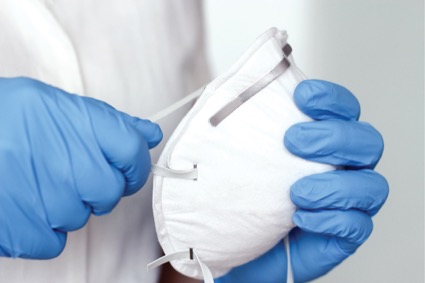As the COVID-19 pandemic continues to plague the world, various groups are issuing guidance on restarting and expanding elective surgeries. During a recent joint webinar from the American Society of Anesthesiologists (ASA) and American College of Healthcare Executives (ACHE), Mary Dale Peterson, MD, the president of the ASA, reviewed recommendations on patient testing and personal protective equipment (PPE).
According to the ASA and ACHE, all patients should be screened for COVID-19 symptoms before arriving at the hospital, and all patients should undergo nucleic acid amplification testing, including polymerase chain reaction tests, for SARS-CoV-2 before nonemergent surgery. Attention should be given to mitigating false-negative tests. If a patient tests positive for SARS-CoV-2, elective surgical procedures should be delayed until the patient is no longer infectious and has demonstrated recovery from COVID-19. Policy should contemplate CDC test–based and non–test-based strategies.
The ASA/ACHE recommendation states that the evaluation of sufficient recovery by a patient should include an assessment of the patient’s exercise capacity (metabolic equivalents, or METS), and that antibody testing should not be used for preoperative screening. Antibodies develop in the second week of symptoms, and not all patients who are infected with SARS-CoV-2 will develop detectable antibodies.
Dr. Peterson said according to the ASA and Anesthesia Patient Safety Foundation (APSF), regardless of screening and testing, appropriate PPE (masks, eye protection, gowns, gloves) should be worn for all patients. “This is especially true for aerosol-generating procedures (AGPs), which should require an N95 mask or equivalent of that and eye protection (face shields/goggles),” Dr. Peterson said. AGPs include intubation and extubation, bag–valve–mask ventilation, bronchoscopy, electrocautery of blood and gastrointestinal tissue, laparoscopy, endoscopy, and ear nose and throat procedures. “AGPs are anything that would involve a lot of coughing, anything that you are really involved in the airway and could potentially generate these microdroplet aerosols,” Dr. Peterson said.
For high-risk patients, those who have active COVID-19, influenza-like symptoms, or a patient under investigation, the ASA/APSF recommends a single-use N95 mask or powered air-purifying respirator (PAPR), eye protection, a gown and double gloves. For low-risk patients, those who are asymptomatic and untested or COVID-19–negative 48 to 72 hours before surgery, the two groups recommend an N95 mask and eye protection that can be reused, a gown, and double gloves. “We feel that probably most institutions do not have enough N95 supplies to toss after every single patient encounter,” Dr. Peterson said.
She said PPE is controversial. “You might ask if the patient tests negative, why am I still wearing an N95 mask, and that is because we know there are false negatives,” Dr. Peterson said. “The false negatives come from how well you have gotten the sample all the way to how well the machine and the reagents and all of that are able to properly analyze it. You can have errors in sampling, as well as you have a margin of error just from the machine.”
Dr. Peterson said a PAPR is preferable for individuals who fail an N95 fit test or for very high-risk procedures, such as skull base surgery in a COVID-19 patient. Depending on air flow, the use of a PAPR may reduce the risk for exposure to health care workers, she said.
“Experts are unclear on the effect PAPRs have on the sterile field because PAPRs do not filter discharged air,” Dr. Peterson said. She pointed out that PAPRs can be cumbersome to use given that they can impair hearing, can fog up limiting visibility, can cause dry eyes, and do not allow use of a headlight.
—Kate O’Rourke





